Basic Drawing and Foundations - Face to Face
Basic Drawing and Foundation
Art Lesson, Purpose and Goal
With this training, an environment is provided where the artists who want to include the art that has shaped their lives can reveal their individuality, and basic techniques are taught and application studies are carried out in the fields they want to focus on.
The aim of the art class is to teach and develop basic art skills in the visual arts. These classes usually cover topics such as different art techniques, color theory, composition, perspective, and the use of light and shadow. In addition, students are informed about art history and different art movements through the works of different painters. Art classes also aim to help students develop their creativity, increase their emotional expression skills, and strengthen their visual thinking skills. These classes usually provide students with the opportunity to critically evaluate works of art and exhibit their own works. In this way, students have the chance to express themselves and develop in the field of art.
Process and Content
Art classes usually follow a specific process and content. The process and content of the classes usually include the following elements:
Basic Painting Techniques: Classes usually start with teaching students different painting techniques. These techniques include drawing with different materials such as charcoal, watercolor, acrylic, pastel, aquarel pencil, and charcoal pencil.
Pattern: It is the depiction of the subject on the surface with various painting materials. Pattern is the foundation and beginning of the picture. Various materials such as pencil, charcoal scanning tips are used in education. In terms of pattern, attention is paid to the relationship between light and shadow and light and dark. Framing and composition are indispensable elements of pattern.
Color Theory: Color theory teaches students how to use colors, color combinations, and the emotional effects of colors.
Composition: Classes teach students how to compose a picture, place objects, and use space.
Perspective: Perspective includes techniques for creating a sense of depth and space in a picture. Students are taught different perspective techniques.
Art History and Movements: Painting classes generally focus on art history and different painting movements. Students are given information about important painters and painting movements from different periods.
Creativity and Expression: Lessons also help students develop their creativity and increase their ability for emotional expression.
In addition to these elements, art classes generally aim to provide students with critical thinking skills, the opportunity to exhibit their own works, and express themselves in the field of art.
COURSE OUTCOMES
At the end of this process, the student learns the concept of art and can define it. He/she understands the relationship between line, color, three dimensions and ratio-proportion. The student understands that a picture consists of lines and colors. The student gets to know important painters and their works. The student's small hand muscles develop thanks to visual designs and drawings. The student understands the concept of perspective. The student, whose artistic knowledge develops, comes up with more creative ideas. The student, who understands the importance of art and design, also has a different perspective on life and learns to think creatively. The person who learns to think creatively is also successful in his/her profession.
Outcomes of the art course may include:
Visual Art Skills: Students develop their visual art skills by learning different painting techniques through art classes.
Creativity Development: Art classes help students develop their creativity by providing them with creative thinking and expression skills.
Visual Thinking Ability: Students strengthen their visual thinking abilities and develop their visual perception through art classes.
Art History and Cultural Knowledge: Art classes increase students' cultural knowledge by providing information about different art movements, painters and art history.
Critical Thinking: Students gain the ability to critically evaluate their own work and other works of art.
Expressive Ability: Art classes help students learn to express themselves through art by providing emotional and conceptual expression skills.
These achievements help students improve themselves in the field of art and gain the ability to look from different perspectives.
Course Content
In the first 3 months of beginner level courses, both theoretical knowledge and practical work are usually taught. Students are given the opportunity to try different painting techniques and are encouraged to develop their own creative style. This course program usually provides students with a general introduction to painting and aims to develop basic skills.
Week 1-2: Basic Drawing Techniques
Correct perspective, proportion and composition
Basic line studies and creation of forms
Week 3-4: Pencil Drawing Studies
Light and shadow techniques
Pencil portrait studies
Week 5-6: Color Theory and Basic Color Applications
Basic color theory
Color mixing and basic color applications
Week 7-8: Acrylic Painting Techniques
Acrylic paint materials and their use
Basic acrylic painting techniques and applications
Week 9-10: Watercolour
Watercolour materials and their use
Basic watercolor techniques and applications
Weeks 11-12: Personal Projects and Evaluation
Students draw a picture on a topic of their choice
General evaluation of the course and examination of student portfolios
Note: Intermediate and advanced levels of training are available.
Süleyman Çağlayan
Süleyman ÇAĞLAYAN was born in Istanbul in 1977. He completed his undergraduate program in the Painting Department of the Faculty of Fine Arts at Mimar Sinan University in 2002, under the tutelage of Neşe Erdok, Nedret Sekban, and Ahmet Umur Deniz. In 2010, he became Assoc. He completed the Master's Program in Painting at Mimar Sinan University, Institute of Social Sciences, under the supervision of Ahmet Umur Deniz. EXHIBITIONS 2002 Group Exhibition, Evin Art Gallery, TÜYAP Art Fair 2003 Group Exhibition, Evin Art Gallery, TÜYAP Art Fair 2003 Group Exhibition, Evin Art Gallery 2004 Personal Exhibition, Maltepe Art Gallery 2004 Group Exhibition, Maltepe Art Gallery 2005 Personal Exhibition, Maltepe Art Gallery 2007 Personal Exhibition, Maltepe Art Gallery 2012 "Unnamed Times I" Personal Exhibition, Doruk Art Gallery 2013 "Unnamed Times II" Personal Exhibition, Doruk Art Gallery 2013 TÜYAP Art Fair 2014 Contemporary Istanbul Art Fair 2014 TÜYAP Art Fair 2014 Group Exhibition, Akademililer Art Gallery 2016 Personal Exhibition, Kızıltoprak Art Gallery
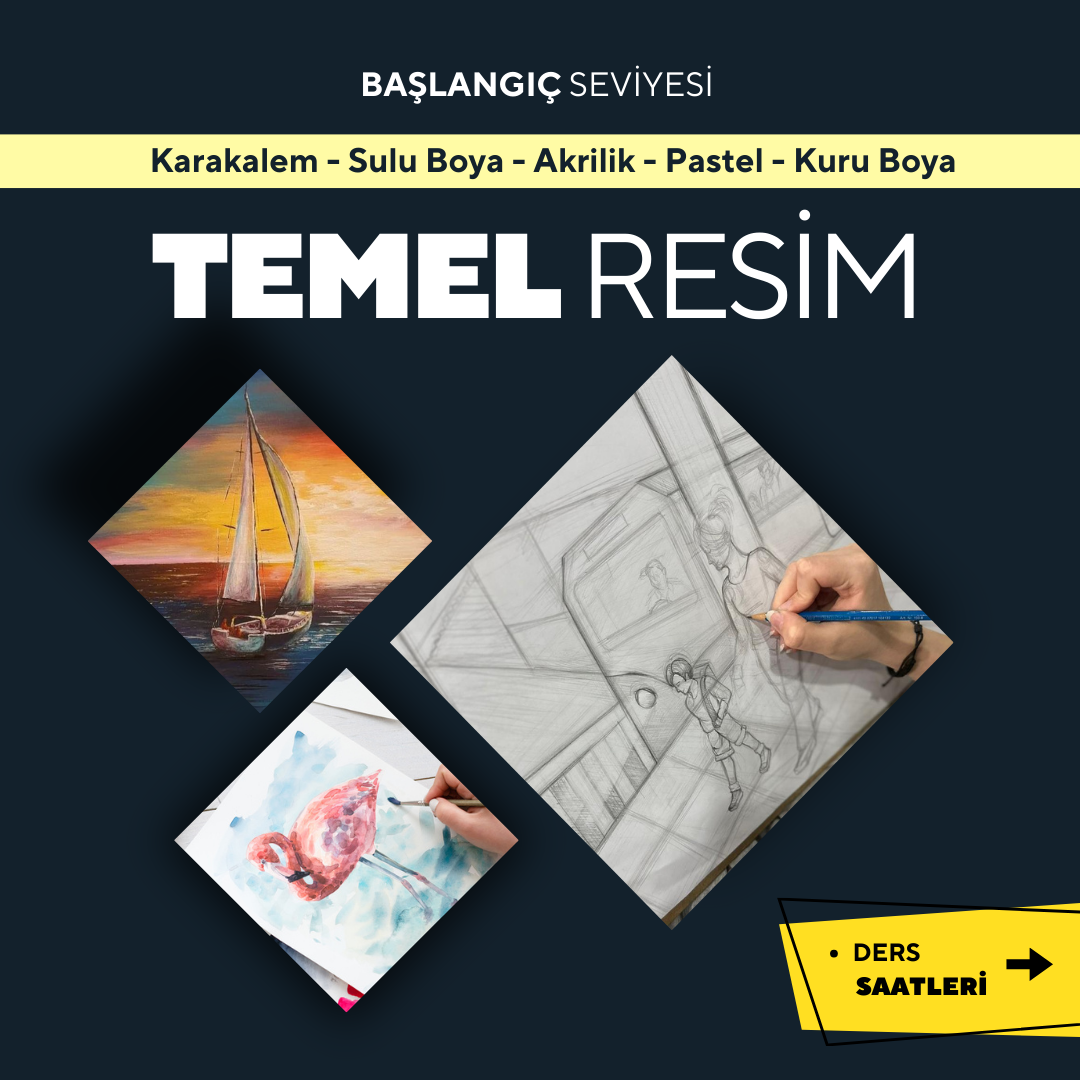
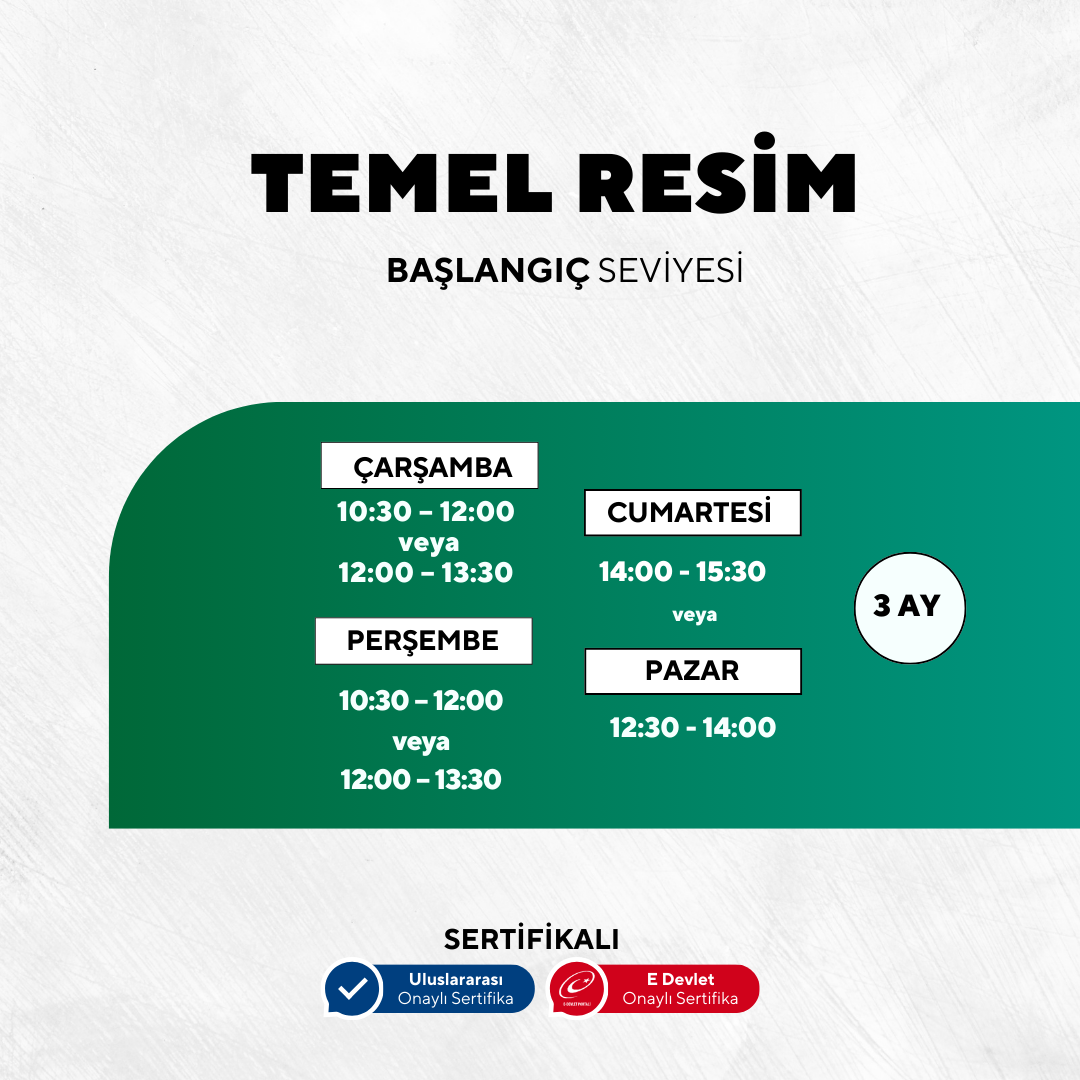
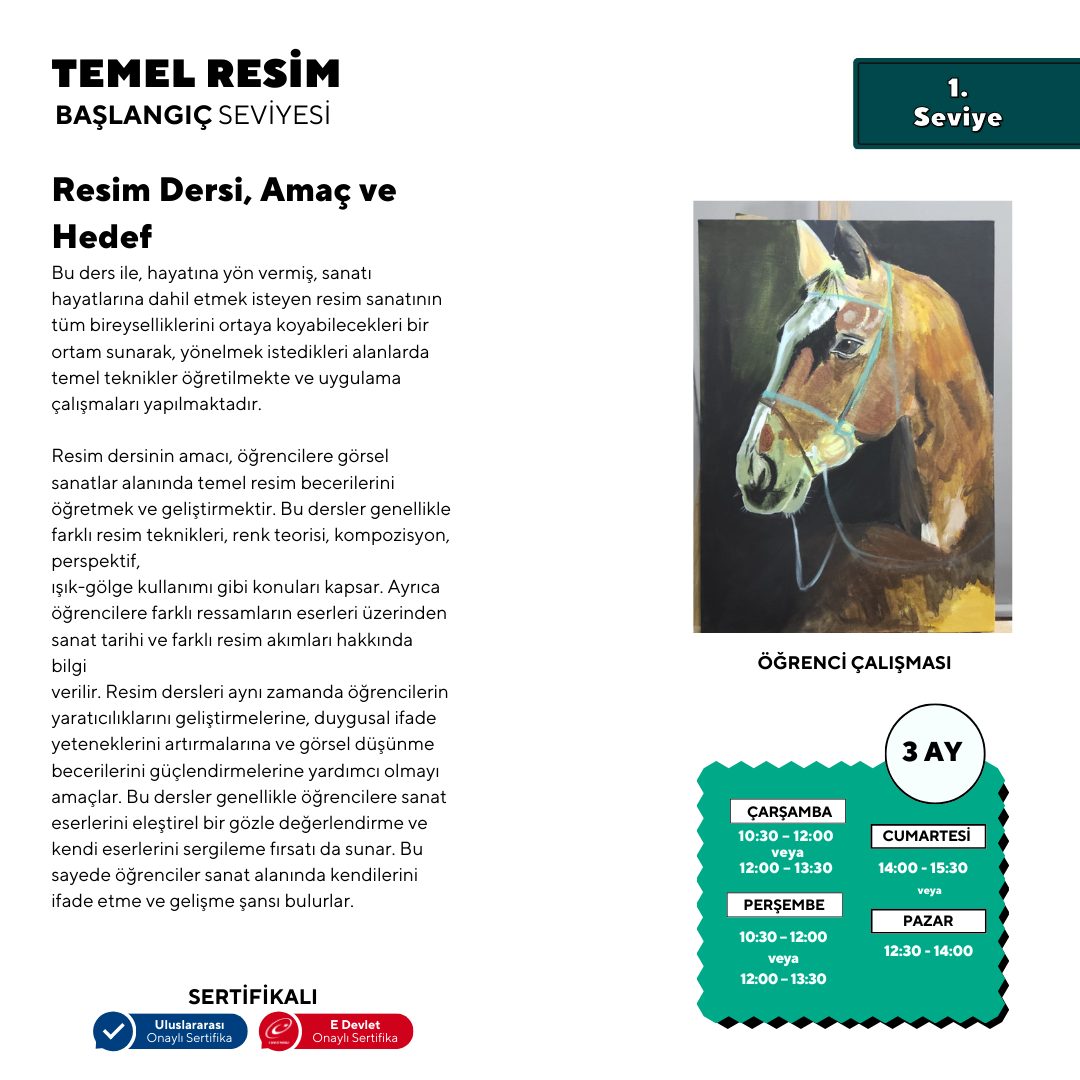
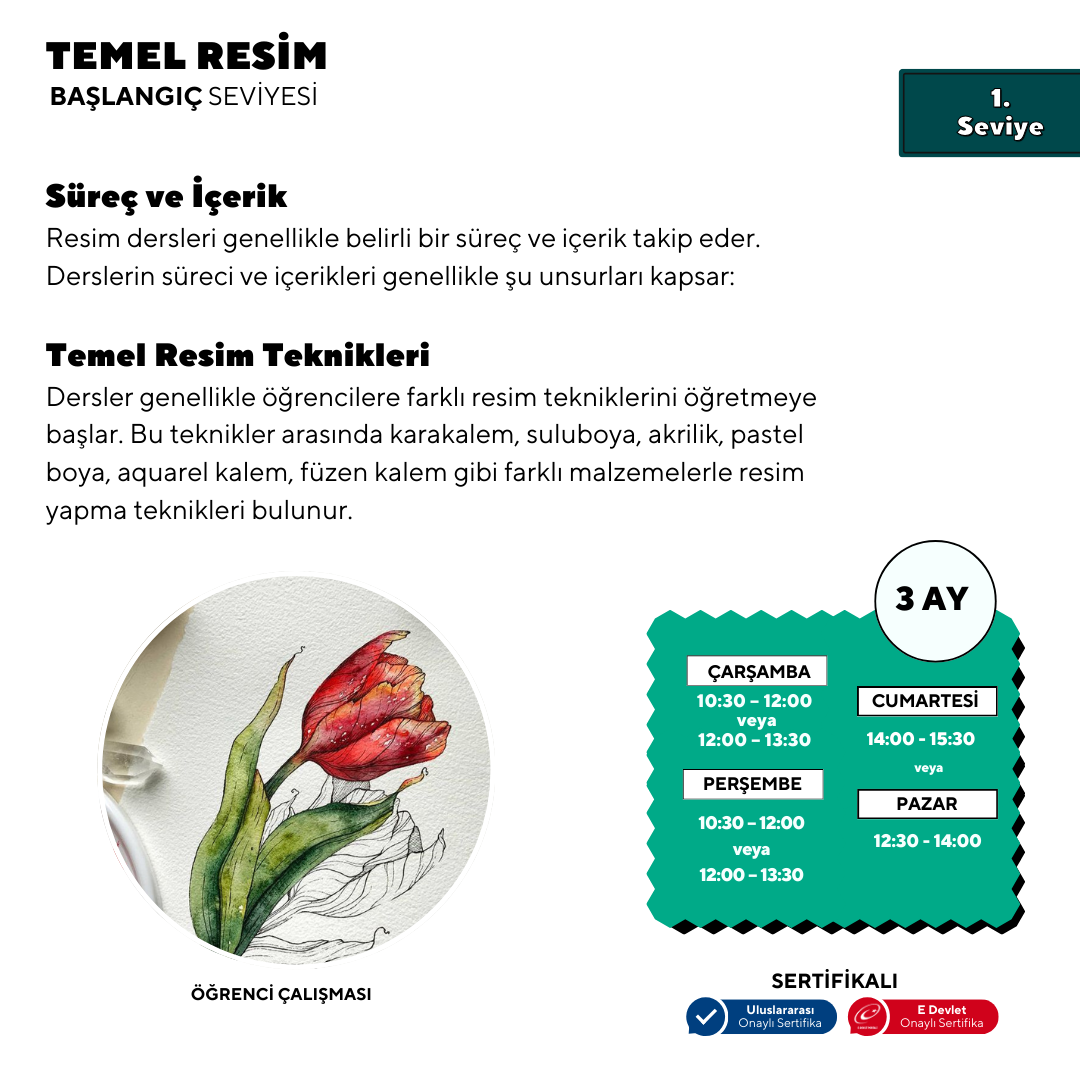
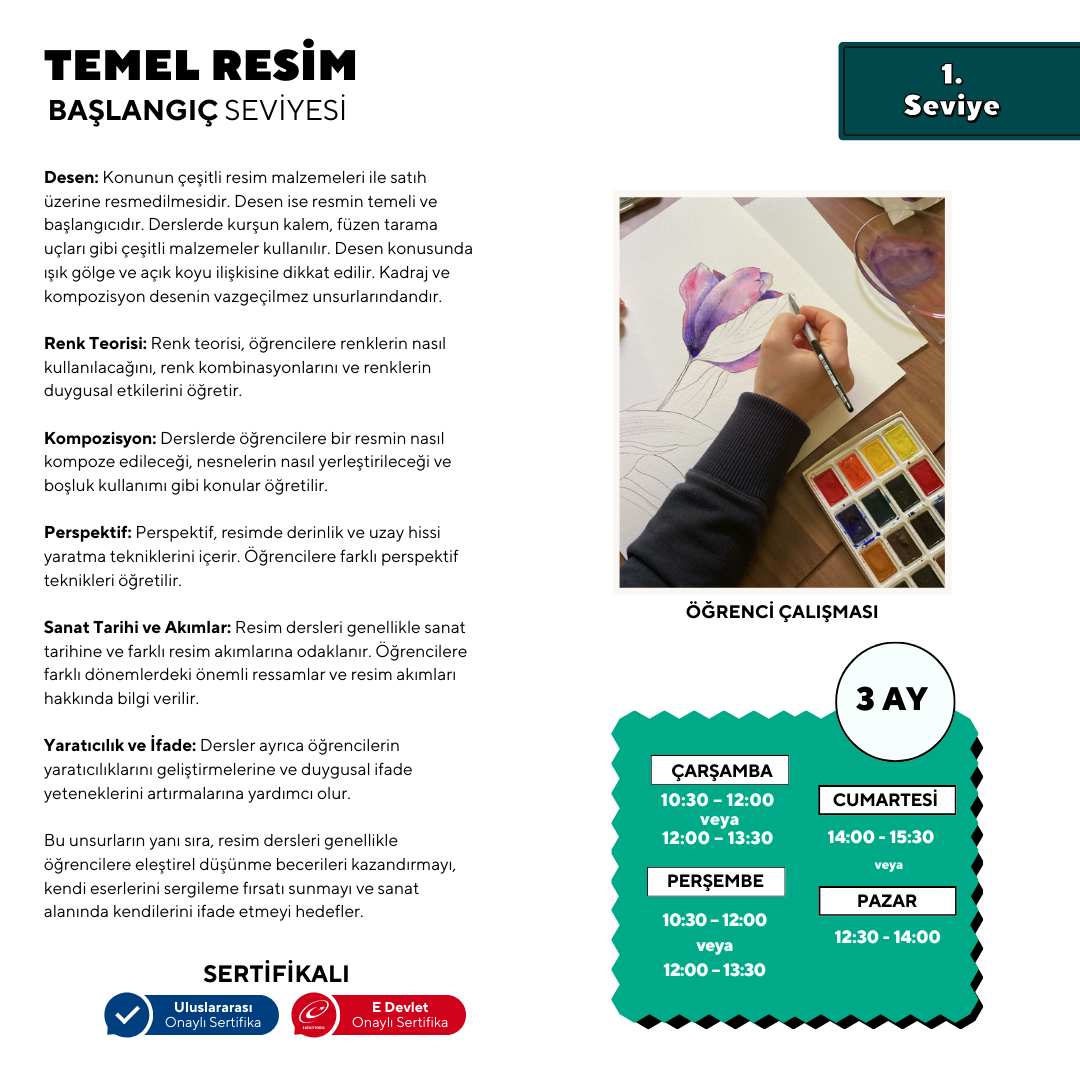
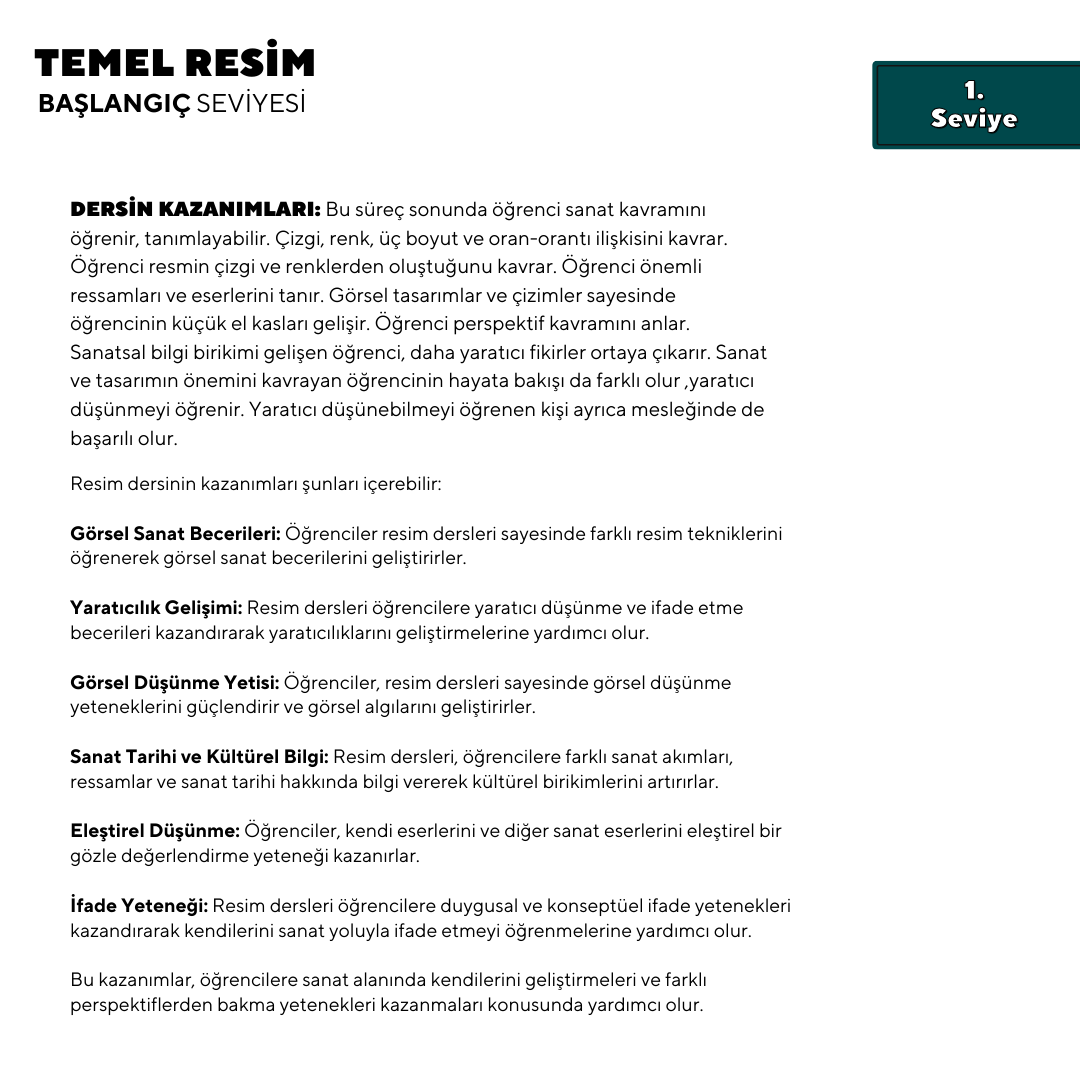
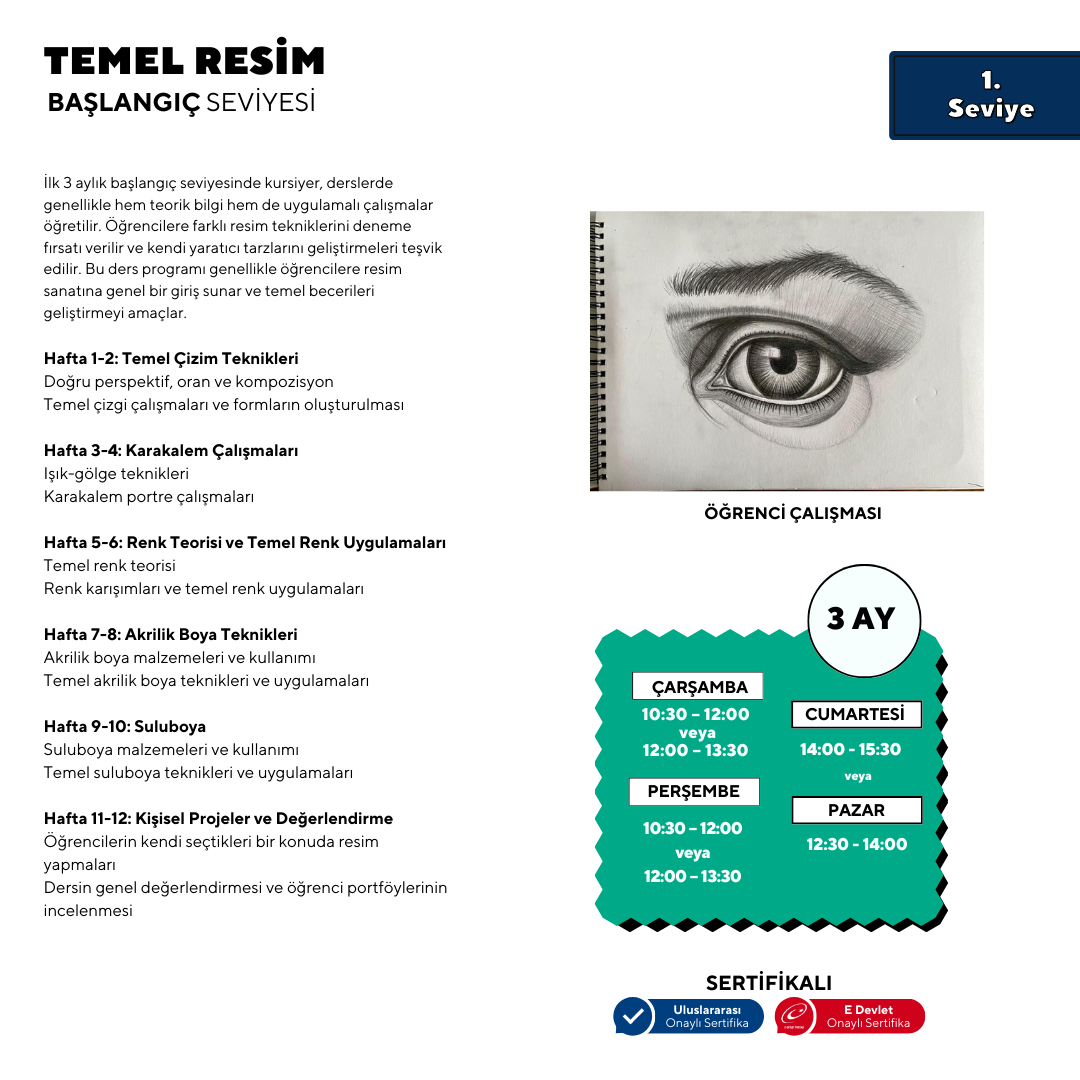
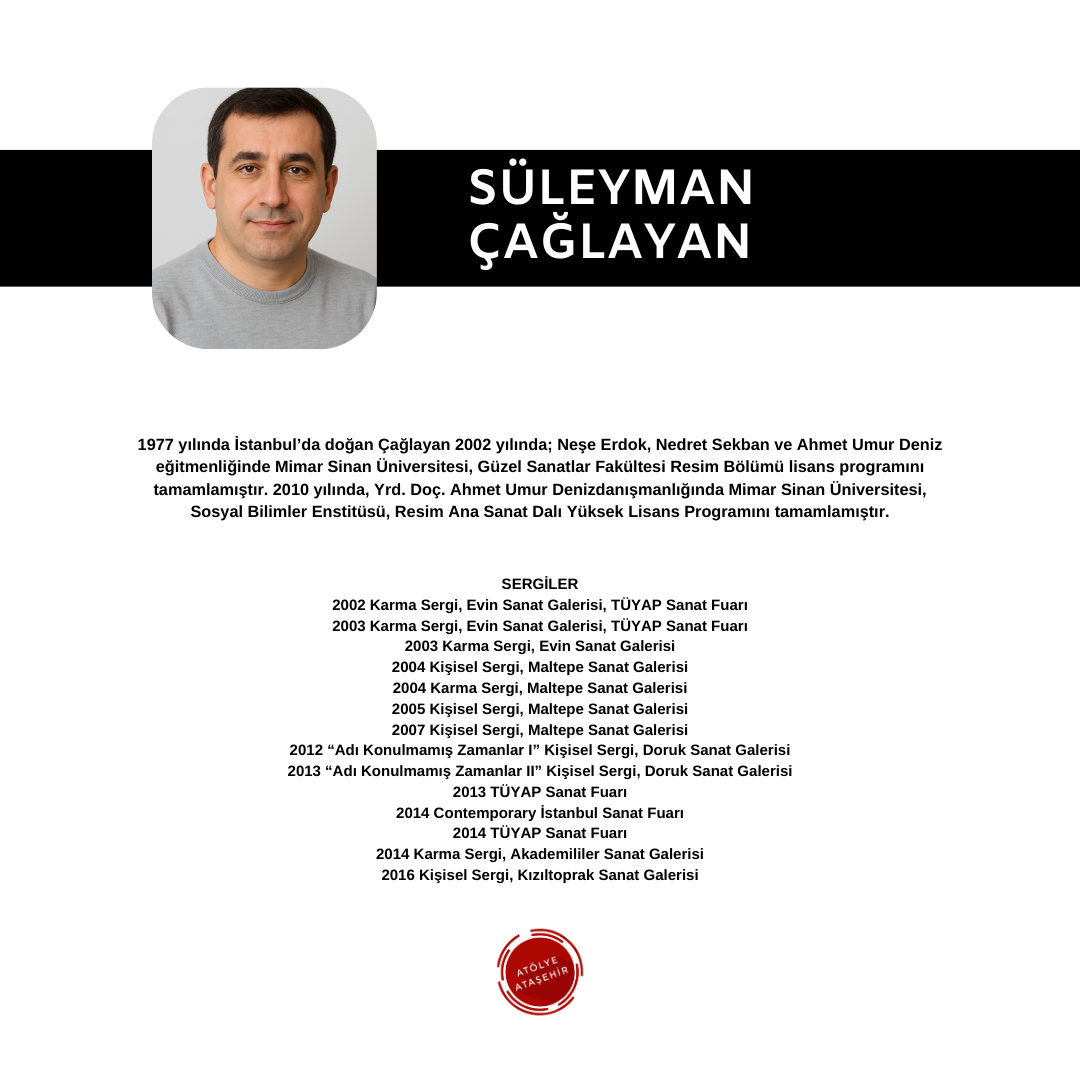
Thursday, November 27th 10:30 /12:00 or 12:00 /13:30 or
Saturday, November 29th, 14:00 / 15:30 or
Sunday, November 30th, 12:30 / 14:00 or
















